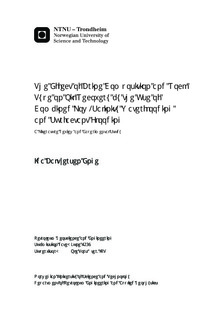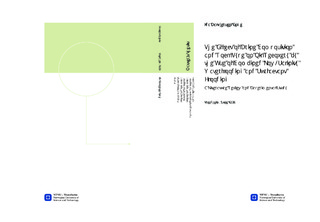| dc.description.abstract | The possibility of achieving incremental oil recovery by the use of low salinity injection water has been demonstrated by numerous laboratory experiments and an increasing amount of field trials. The underlying mechanisms behind this phenomenon are not well understood, but many researchers have suggested that it is related to complex crude oil/brine/rock interactions. In recent years, positive results have been presented regarding the combination of low salinity water and surfactant injection. This Thesis aims to investigate the effect of brine composition and rock type on low salinity surfactant injection.A series of coreflooding experiments were conducted on two different types of outcrop Berea sandstone cores, with different mineral composition, aged with different compositions of brine containing varying concentrations of NaCl, CaCl2 and MgCl2 and one crude oil. The cores were flooded with low salinity brine in secondary mode, and a low salinity surfactant solution, using the anionic surfactant Sodium Dodecylbenzene Sulfonate, in tertiary mode, both performed at 60°C. Oil recovery and the shape of production curves were analyzed and compared. The results show a clear trend that oil recovery is highest when the contrast between in-situ- and flooding divalent cation content is highest. Cores saturated with a brine containing 10% divalents, where 9% of this was CaCl2, and flooded with pure NaCl brine, produced the highest amount of oil during low salinity brine injection for both types of Berea cores. The low salinity oil recovery ranged from 42.3 to 57.7% OOIP. Low salinity surfactant injection recovered incremental oil for all the corefloods, varying from 2.1 to 8.5% OOIP. Another observation was that cores aged with brines containing divalent cations appeared to be more oil-wet, and had a larger benefit from the low ionic strength of the injection brine, regardless of the mineral composition of the rock. The shape of the production curve for some of these cores indicated a change in wettability during the low salinity brine injection.There is an increasing interest in designing an injection brine composition with the aim of recovering maximum amount of oil. Optimized composition can also lead to maximum recovery of a chemical flood. This research was carried out having this mindset. It was observed that by changing the chemistry of the injection brine, while everything else was fixed in the COBR system, there was an 11% difference in in oil recovery in low salinity waterflooding and an 18% difference in final oil recovery after tertiary low salinity surfactant flooding. This reinforces the importance of the brine composition on oil recovery, and presents a basis for further research. | nb_NO |

